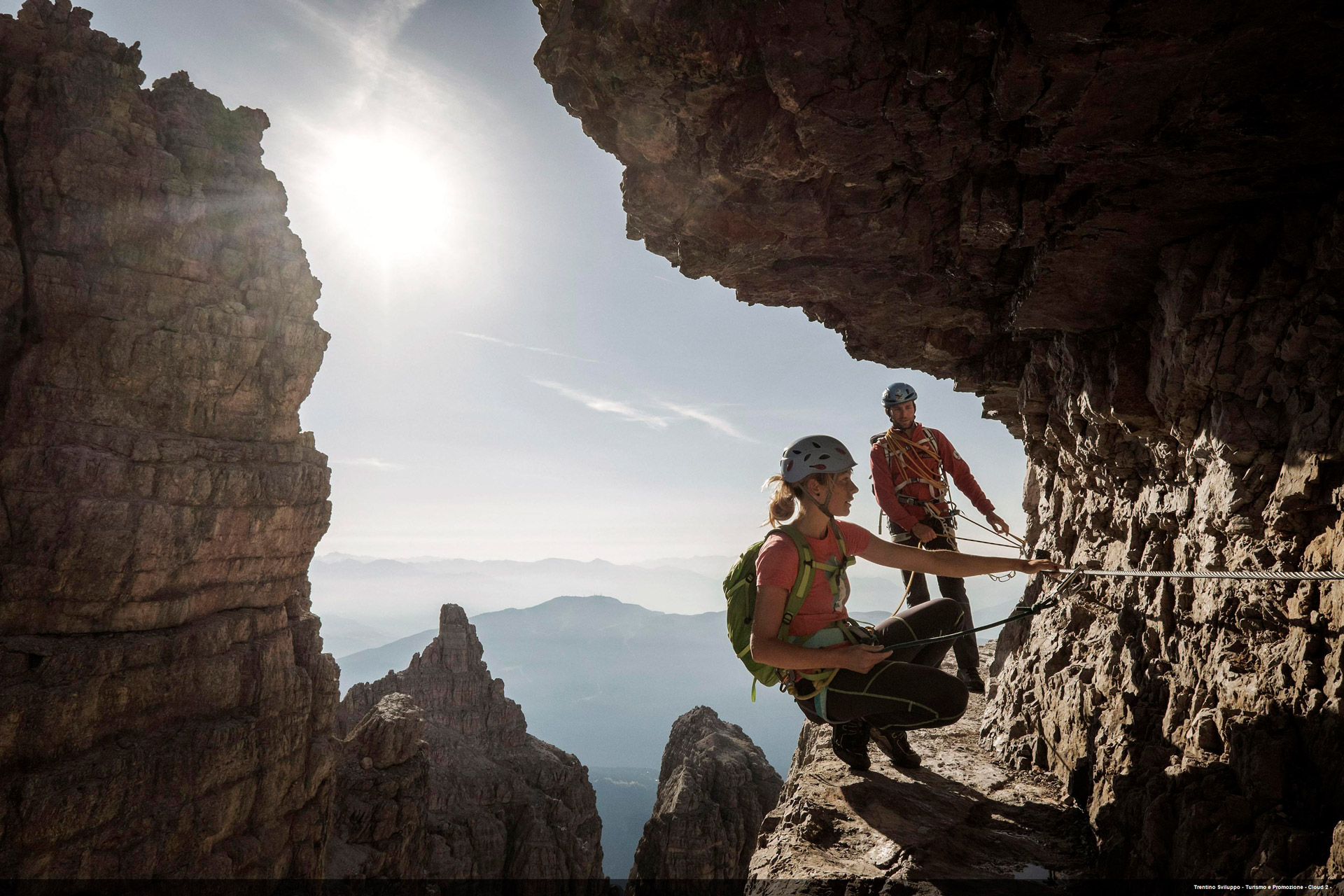Europe, or more specifically, Italy, is the homeland of the via ferrata. The idea of bolting steel ladders and safety cables to the rock was developed in the Dolomites during the First World War. As Austrian and Italian troops battled for the high ground, via ferratas* were used to help move troops and weapons around safely. The term via ferrata, now used worldwide, comes from the Italian, meaning “Iron Road” or “Iron Way”. (You might still see Germanic countries using Klettersteig, but almost everyone else uses the Italian terminology.)
These days you can find via ferratas throughout Europe from the highest peaks of the Julian Alps iN Slovenia to the Costa Brava in Spain. There are even quite a few via ferratas in the UK. With over a thousand routes to choose from, we had a hard time picking out our favourites. Rest assured that there are plenty more than we could possibly list in this article.
If you’ve got your heart set on a particular mountain range or area, you’re very likely to find a cheeky little via ferrata route there too.
Via Ferratas in Italy

Italy is a big country and you can find via ferratas everywhere from Süd-Tirol to Tuscany. For this one though, we had to focus on the via ferratas in the Dolomites. They’re simply spectacular. Plus, it’s the Dolomites that people consider the spiritual home of the via ferrata.
Because of this, via ferratas in the Dolomites are all about getting somewhere. You can use the routes to traverse knife edge ridges or connect up two bits of hiking trail that would otherwise be un-connectable. Famous long distance routes like the Alta Via 2 do just that, over several days.
For day trips, there are plenty of good options for towns to base yourself in. Cortina, on the east side of the Dolomites, has a good twenty routes you can do in the area. As well as classic scrambles and ledges, there’s also at least one that takes you behind a waterfall…
On the other side of the Dolomites, the area of Trentino has a good selection of towns. Personally, I have stayed in Madonna di Campiglio to do day routes in the Brenta Dolomites. From here you can also do the 3-5 day via ferrata and trekking route Via delle Bocchette. It’s been on my to-do list for years: incredible rock, incredible panoramic views and fantastical ladder ascents of sheer cliff faces.






